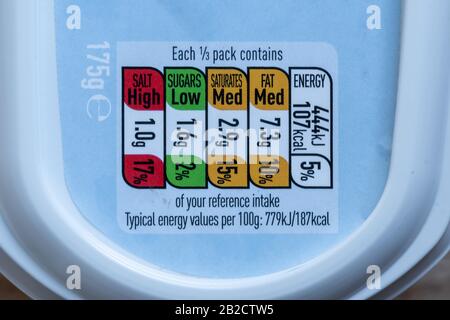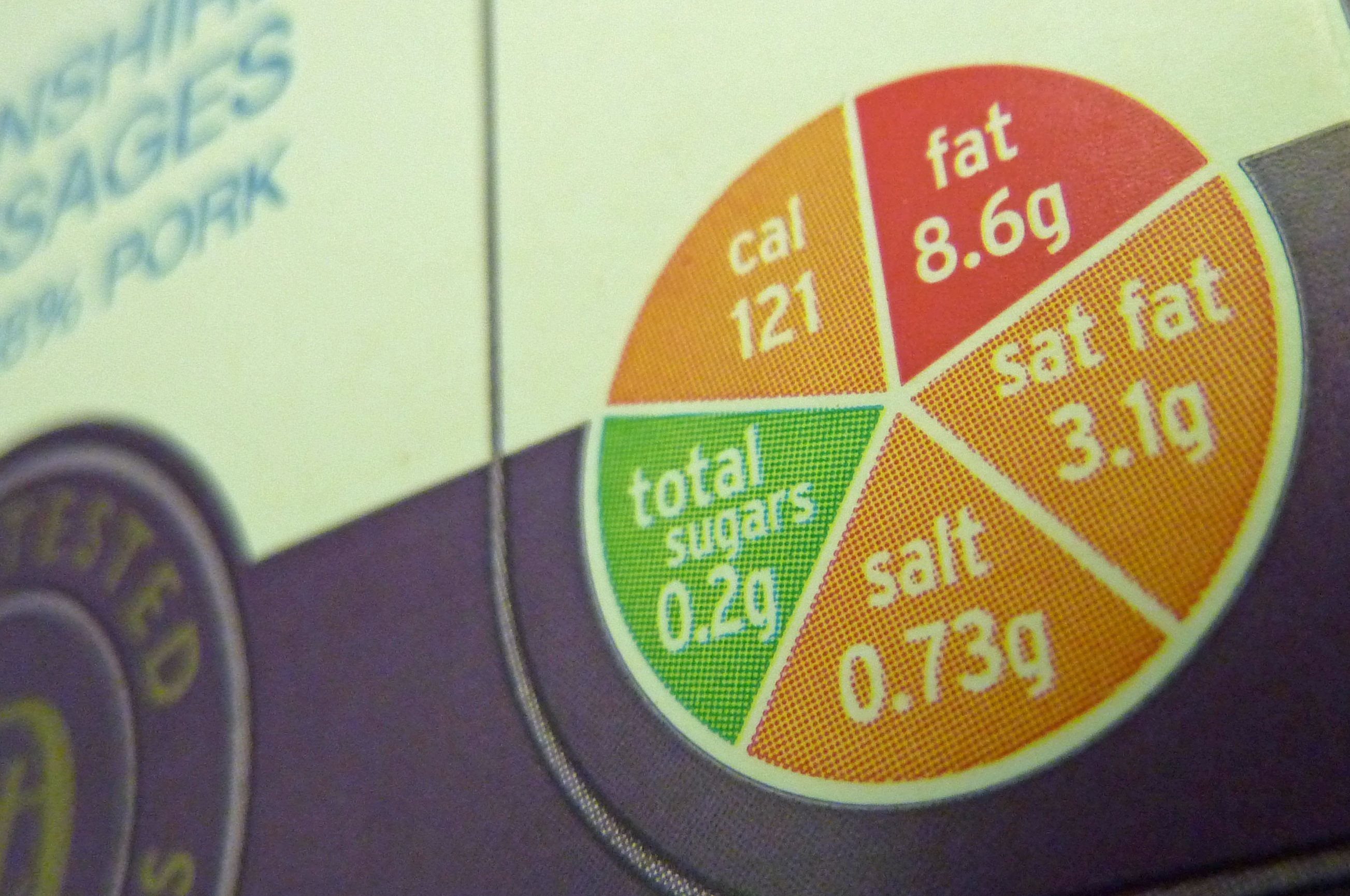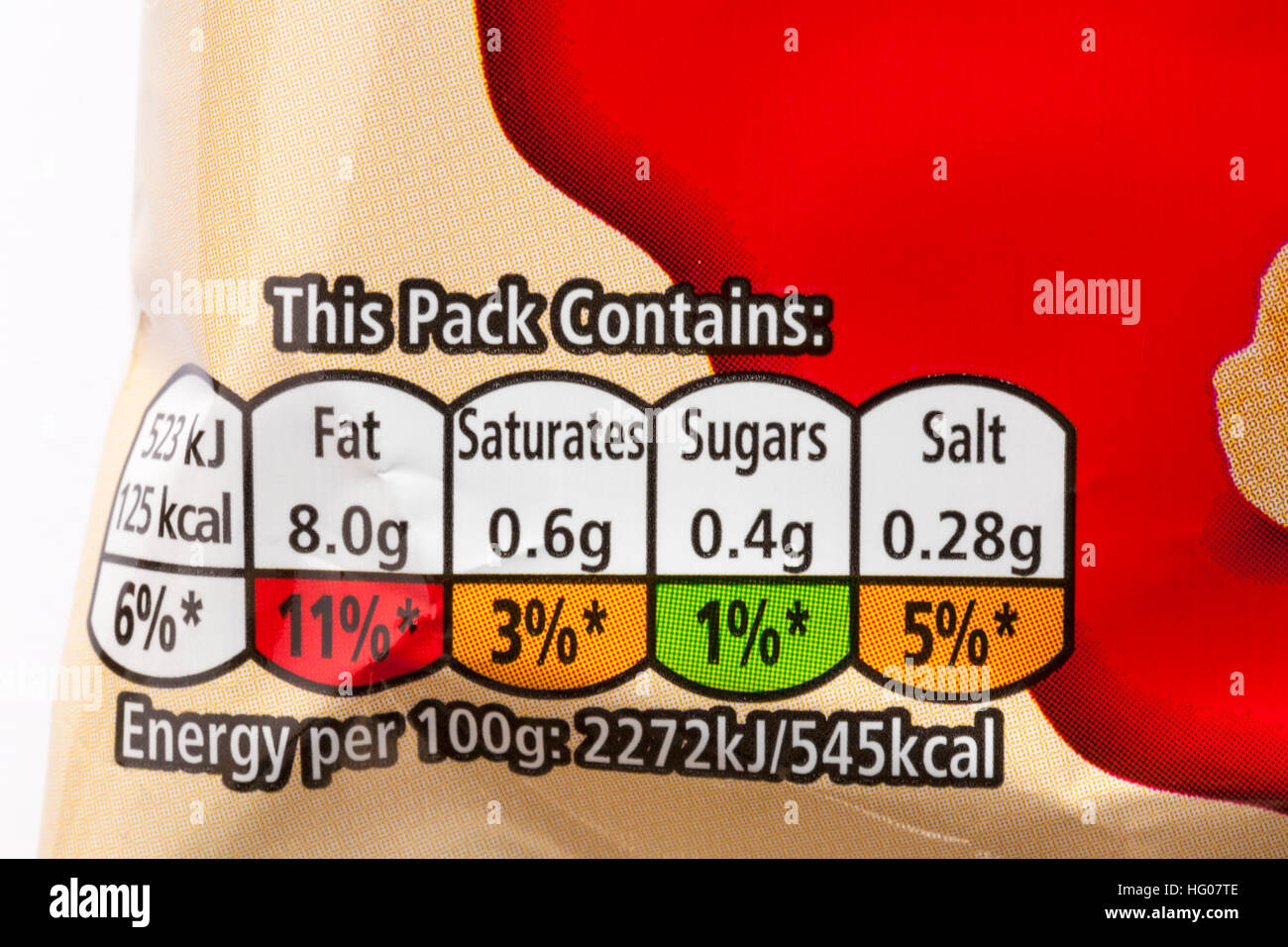40 traffic light nutrition labels
Check the label | Food Standards Agency The traffic light labelling system will tell you whether a food has high, medium or low amounts of fat, saturated fat, sugars and salt. It will also tell you the number of calories and kilojoules... Impact of front-of-pack 'traffic-light' nutrition ... The labelling format recommended by the FSA consists of four separate colour-coded lights indicating the level of fat, saturated fat, sugar and salt in the product. A 'red' light indicates a 'high' level of that nutrient, an 'amber' light indicates a 'medium' level and a 'green' light indicates a 'low' level, with nutrition criteria set by the FSA.
The effect of 'Traffic-Light' nutritional labelling in ... The regulation included a mandatory traffic-light (TL) supplemental nutritional information labelling system to be displayed on the package of all processed foods for sale in the country. This new labelling system displays a traffic light panel for the product content of sugar, fat and salt in addition to the traditional nutrient declaration label.

Traffic light nutrition labels
Nutrition labelling - Food Standards Agency amounts of fat, saturates, carbohydrate, sugars, protein and salt The content of the mandatory nutrition declaration can be supplemented with an indication of the amounts of one or more of the... Traffic light diets label foods 'red,' 'yellow' and 'green ... The traffic light diet and related food-labeling systems have gradually become more popular over the past several years, used in dieting apps, on food labels and in cafeterias. Even Google and the... Traffic light rating system - Wikipedia Food may be labelled with a traffic light label showing how much fat, saturated fats, sugar and salt are in that food by using the traffic light signals for high ( red ), medium ( amber) and low ( green) percentages for each of these ingredients. Foods with 'green' indicators are healthier and to be preferred over those with 'red' ones.
Traffic light nutrition labels. Traffic light food labels - DNAfit Look for five key points on the label: 1. Energy The terms 'kJ' and 'kcal' (calories) tell you how much energy is in a product. Women need an average of 2,000 kcal a day and men need 2,500 kcal on average. 2. Saturates Saturates is another word for saturated fat. This section tells you about the amount of saturated fat in the product. 3. Salt PDF Guide to Traffic Light Labelling - University of Aberdeen The Traffic Light Labelling Scheme allows you to see at a quick glance nutritional content of the product or recipe. Research shows that even small changes to the diet can have an impact on your health and spread over the week it will become significant. To put into context the criteria for 100g of food is: TRAFFIC LIGHTS Front-of-pack nutrition labelling in the UK: building on ... the UK government's and devolved administrations' recommended FOPNL scheme, the 'multiple traffic light label' new international examples, specifically the 'nutri-score' label and 'Chile's health... 'Traffic light' food labels lead to healthier food choices ... Food labeled in yellow were less healthy than the ones labeled green, while those marked in red were the least healthy. According to the study, each food item was labeled based on whether it...
Looking at labels - British Nutrition Foundation The table below shows how high, medium and low levels of fat, saturates, total sugars and salt in foods are classified for front of pack labels (there are different levels for drinks). These levels have been decided by the UK government. The 'per portion' in red is used where portions are 250g or more. What are reference intakes? Traffic Light Calorie Info on the App Store - Apple Inc. Use the traffic light colours to compare products if you're in a hurry. The built-in GDA calculator lets you adjust portion sizes and also helps to better visualize the industry's pack labels right in the store. The app also doubles as your personal, portable diet guide and meal planner. Prepare a personal profile, assemble a meal, a day ... Traffic-light labels could reduce population intakes of ... Traffic-light labelling has been proposed as a public health intervention to improve the dietary intakes of consumers. OBJECTIVES: to model the potential impact of avoiding foods with red traffic lights on the label on the energy, total fat, saturated fat, sodium, and sugars intakes of Canadian adults. PDF Traffic Light Labels - PEAI Typical Values Women Men Children (5-10years) Calories 2,000 kcal 2,500 kcal 1,800 kcal Protein 45g 55g 24g Carbohydrate 230g 300g 220g Sugars 90g 120g 85g Fat 70g 95g 70g Saturates 20g 30g 20g Fibre 24g 24g 15g Salt 6g 6g 4g Many labels list GDAs for women only Guideline Daily Amount Values
The effect of 'Traffic-Light' nutritional labelling in ... Traffic-light nutritional labelling in Ecuador There are two main types of nutritional labels for package products: 1) nutrient declaration/ facts labels, and 2) supplementary nutrition information labels. The nutrient declaration label The effect of "Traffic-Light" nutritional labelling A Randomized Controlled Trial Evaluating the Relative ... Two labels not currently used but under consideration in Singapore are the United Kingdom's Multiple Traffic Light (MTL) label (Figure 1, left panel) and France's Nutri-Score (NS) label (Figure 1, right panel). For each food/beverage, the MTL separately presents major nutrient information with individual color-coded ratings for each ... Red, Amber or Green? Traffic Light Food Labelling Helps in ... The traffic light food labelling helped Canadian adults reduce their overall intake of energy, total fat, saturated fat and sodium compared to baseline-calorie intake reduced by 5%, total fat by 13%, saturated fat by 14% and sodium by 6% among Canadians. Men reaped maximum benefits as they consumed 122 fewer calories, 12 g less total fat, 4 g ... 'Traffic light' nutrition labels on packaged food will not ... Government says making companies have colour coding on every product could have cost about Dh1.4 billion
Traffic light nutrition labelling research - FoodNavigator A higher proportion of respondents reported that they looked at nutrition information once the traffic light system was in place, with this percentage increasing from 15% to 33%. These changes led the researchers to claim that: "Traffic light food labels prompted individuals to consider their health and to make healthier choices at point-of ...
'Traffic-light' nutrition labelling and 'junk-food' tax: a ... Methods: For traffic-light labelling, estimates of changes in energy intake were based on an assumed 10% shift in consumption towards healthier options in four food categories (breakfast cereals, pastries, sausages and preprepared meals) in 10% of adults.
Traffic Light Food Labels Change the Way You Eat? Diners were first surveyed one month before Traffic Light Labelling appeared in the cafeteria with these results:-46% reported that nutrition was an important factor when choosing what to eat-15% reported taking the nutritional information into consideration . Two months after the new labelling systems were put into place, diners were surveyed ...
Is the food traffic light labelling system useful? | Patient The traffic light label was introduced in 2014, as part of an initiative by the government to improve public health. It was designed to give consumers an immediate idea as to whether something is: healthy (green or low) or not (red or high) in terms of fat, sugar or salt. Traffic light system

nutritional information traffic light system labelling with colour coded system on packet of ...
How 'traffic light' labels promote healthier eating ... "several small, experimental studies have suggested that 'traffic light' labels can be an effective method of promoting healthier choices, but there have been few real-world studies of customers' perceptions and purchasing behaviors in response to this type of labeling," explained lillian sonnenberg of mgh nutrition and food service, the …
Traffic light system | Healthy Eating Advisory Service The Victorian Government's Healthy Choices guidelines use a 'trafflic light system' to categorise foods and drinks into three groups. Food and drink categories GREEN (Best choices) Foods and drinks in the GREEN category are the healthiest choices. They are usually: good sources of important nutrients lower in saturated fat, added sugar and/or salt
Traffic Light Labeling System - Consumer Voice Traffic Light Labeling System. In 2007, Food Standard Agency of UK developed a method of labeling food with a traffic light showing how much fat, sugar and salt are in that food. High Content (unhealthy) is shown by red, Medium (moderate) by amber and Low (healthy) by Green colors. Food with Green color is preferred over the ones with red color.
Food labels - NHS These labels include information on energy in kilojoules (kJ) and kilocalories (kcal), usually referred to as calories. They also include information on fat, saturates (saturated fat), carbohydrate, sugars, protein and salt. All nutrition information is provided per 100 grams and sometimes per portion of the food.
'Traffic light' food labels reduce calories purchased in ... 'Traffic light' food labels reduce calories purchased in hospital cafeteria Date: July 10, 2019 Source: Massachusetts General Hospital Summary: A new study shows that labeling food choices in a ...
Traffic Light Nutrition - This Nutrition Traffic Light Nutrition Label For Walkers Crisps Even candy bar groups are becoming in on the motion, bragging about their protein content material because it has some peanuts, however it's also a sweet bar, with 50 grams of sugar, similar to Froot Loops can be taken into consideration breakfast candy, as the identical serving would have 40….
Beyond Healthiness: The Impact of Traffic Light Labels on ... The traffic light labels indicate the levels of four key nutrients (i.e., fat, sugar, saturates, and salt) commonly contained in processed food, with red indicating a high level, amber a medium level, and green a low level of the respective nutrient.
Traffic light rating system - Wikipedia Food may be labelled with a traffic light label showing how much fat, saturated fats, sugar and salt are in that food by using the traffic light signals for high ( red ), medium ( amber) and low ( green) percentages for each of these ingredients. Foods with 'green' indicators are healthier and to be preferred over those with 'red' ones.
Traffic light diets label foods 'red,' 'yellow' and 'green ... The traffic light diet and related food-labeling systems have gradually become more popular over the past several years, used in dieting apps, on food labels and in cafeterias. Even Google and the...

Nutrients | Free Full-Text | Are Front-of-Package Warning Labels More Effective at Communicating ...
Nutrition labelling - Food Standards Agency amounts of fat, saturates, carbohydrate, sugars, protein and salt The content of the mandatory nutrition declaration can be supplemented with an indication of the amounts of one or more of the...







Post a Comment for "40 traffic light nutrition labels"